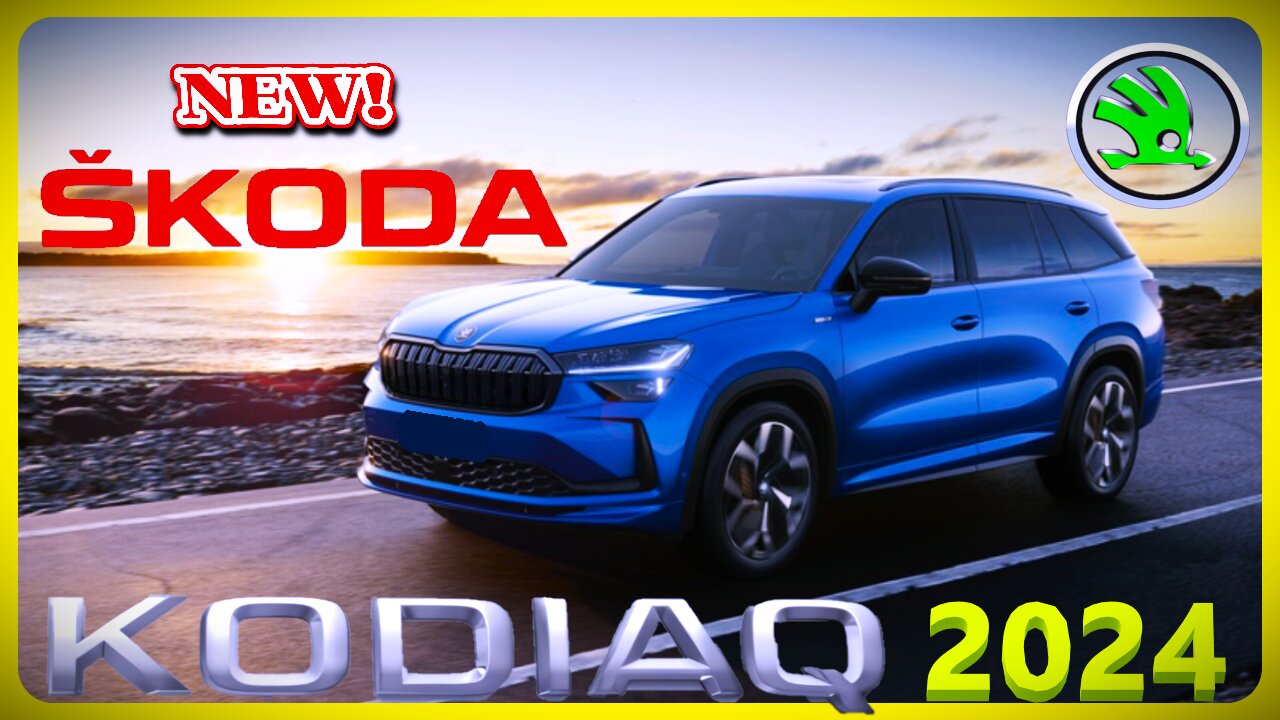Premium Only Content

NEW SKODA KODIAQ 2024 | FIRST LOOK & VISUAL REVIEW#car_2024 #skoda #kodiaq #first_look
NEW SKODA KODIAQ 2024 | FIRST LOOK & VISUAL REVIEW#car_2024 #skoda #kodiaq #first_look
Starting with the exterior, Škoda has stretched the Kodiaq by 61 mm to achieve an overall length of 4,758 mm, while keeping the wheelbase at 2,971 mm. Rather unusual for a new-generation vehicle, the width has decreased by 18 mm to 1,864 mm while the height is down by 17 mm compared to the model it replaces, now at 1,659 mm.
The new Kodiaq is available with a wide range of 17- to 20-inch alloy wheels and nine colors, including a new Bronx Gold metallic. The top-of-the-line Sportline trim level features a generous amount of black accents, including, for the first time, fully dark D-pillars. The roof rails, window frames, side mirror caps, front grille surround, rear diffuser and badges are all black. For the top-of-the-line model, Škoda adds Sportline badging to the front wings and exclusive 19-inch wheels with a high-gloss anthracite finish or an optional 20-inch set with aero covers.
Speaking of lighting, Škoda is using its second generation Matrix LED technology for the headlights, which now have 50 percent more light elements and deliver 15 percent more light output. These smarter headlights are standard on the Sportline and can be accompanied by a horizontal light bar across the grille.
Stepping inside, the changes are immediately noticeable, and not just because of the large display. For starters, the gear selector now sits on the steering column to create more space between the front seats. There's less switchgear than before because Škoda has installed Smart Dials on the center console. These take the form of 1.25-inch displays built into three rotary knobs similar to those in the Audi TT.
While the outer ones allow the driver and front passenger to adjust the interior temperature, seat heating and ventilation, the center display can be customized to show four different functions: infotainment system volume, fan speed, air direction and intelligent climate control. Other functions are accessed through the standard 10-inch infotainment display or the optional 13-inch display. The driver has a 10-inch digital instrument cluster that can be supplemented with an optional next-generation head-up display.
Without lowering the rear seats, you now have 910 liters of luggage space in the two-row model, 75 liters more than before. Fold them down and the capacity increases to a whopping 2,105 litres, 40 litres more than the first-generation Kodiaq. Opt for the seven-seat model and load space behind the third row increases to 340 litres, or 70 litres more than before. Fold down the third row and you have 845 litres, an increase of 80 litres. The three-row model's maximum cargo capacity has increased by 30 liters to 2,035 liters. The seven-seat model also has an additional 15 mm of headroom for rear-seat passengers.
Of course, the Kodiaq is loaded with comfort features: four USB-C ports with 45W of power, another USB-C with 15W built into the rearview mirror, nine speakers (a 14-speaker Canton sound system is optional), and inductive charging (15W) with cooling for two smartphones. Massaging front seats are available, as is a new climate control menu that's easy to access even though most physical buttons are gone.
Power comes from a range of internal combustion engines, starting with a 1.5 TSI petrol unit that benefits from mild hybrid technology. It runs on the Miller cycle and has a variable geometry turbocharger. The engine produces 150 horsepower (110 kilowatts) and features a further development of the VW Group's active cylinder technology, which switches off the cylinders to save fuel when the extra power is not needed. For even greater efficiency, the powertrain supports regenerative braking, allowing the SUV to start with the gas engine off.
If you need more power, the larger 2.0 TSI has 205 hp (150 kW) and comes with all-wheel drive, while the 1.5 TSI is only offered with front-wheel drive. Those who still want a diesel engine can get a 2.0 TDI with 150 hp (110 kW) and FWD or 193 hp (142 kW) and AWD. Whichever you choose, a seven-speed DSG transmits the power to the road.
The big update is a plug-in hybrid based on the 1.5 TSI with 150 hp (110 kW) and combined with an electric motor for a total system output of 205 hp (150 kW). There's a lithium-ion battery pack with a capacity of 25.7 kWh, which Škoda says is enough for an electric range of over 100 kilometers. Once depleted, the battery can be recharged at 11 kW with AC or up to 50 kW with DC.
-
 3:05:00
3:05:00
TimcastIRL
6 hours agoTrump Floats Accepting 600,000 Chinese Student Visas, MAGA Uproar | Timcast IRL
194K125 -
 8:44:47
8:44:47
SpartakusLIVE
11 hours ago$20,000 Hide and Seek Tourney w/ Stonemountain64 || #1 Rat wins the BIG CHEESE
62.3K -
 2:34:02
2:34:02
Barry Cunningham
7 hours agoLISA COOK | ADAM SCHIFF | LETITIA JAMES | ARE THEY BEING SACRIFICED BY THE DEEP STATE?
89.4K53 -
 1:36:19
1:36:19
Flyover Conservatives
15 hours agoOnly 17% of Millennials Hit These 5 Adult Milestones—Why?; What If Childhood Trauma Is Behind Your Health Problems? - Dr. Troy Spurrill | FOC Show
32.6K4 -
 4:49:04
4:49:04
HogansAlleyHero
16 hours ago💥CHASING DOPAMINE💥✅TRUMP SAYS BATTLEFIELD IS THE BEST✅
41.8K3 -
 1:57:40
1:57:40
MattMorseTV
7 hours ago $10.90 earned🔴Trump just SHATTERED the PROJECTIONS.🔴
54.3K50 -
 2:32:19
2:32:19
megimu32
6 hours agoOTS: From Star Search to Superstardom
38.7K4 -
 1:56:21
1:56:21
Joker Effect
5 hours agoInterviewing GREENMAN! Looks like he is coming to Rumble! Let's give him a warm welcome! REAL TALENT
23.7K1 -
 1:07:21
1:07:21
Anthony Rogers
12 hours agoEpisode 380 - Is Pain All In Your Head?
16.6K3 -
 1:46:17
1:46:17
Glenn Greenwald
9 hours agoGlenn Takes Your Questions on Censorship, Epstein, and More; DNC Rejects Embargo of Weapons to Israel with Journalist Dave Weigel | SYSTEM UPDATE #505
118K8